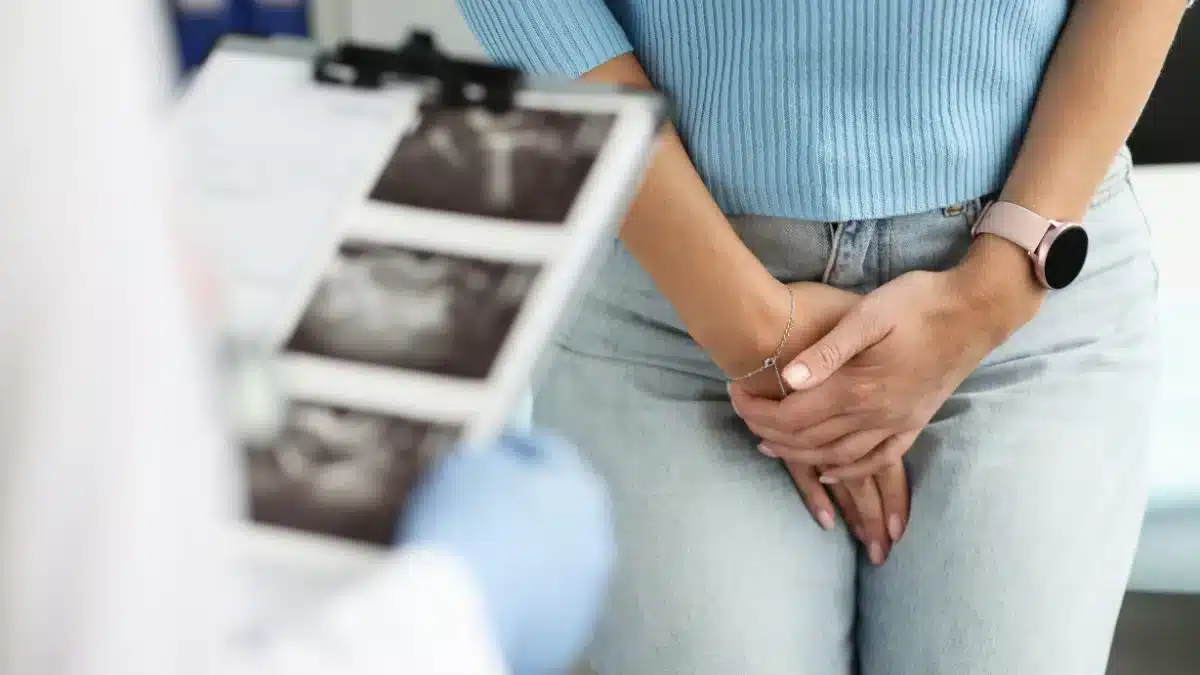Intramural Uterine Fibroids: Common but Concerning?
Uterine Fibroids are non-cancerous growths (tumors) of smooth muscles that affect up to 80 percent of women of reproductive age.
Out of these, the most common types are Intramural Uterine Fibroids.
A woman can have single or multiple Intramural Fibroids in the same area.
They grow within the walls of the uterus and do not necessarily cause symptoms.
However, sometimes, they can cause issues like heavy bleeding or pain, which will require treatment.
To understand all aspects of Intramural Uterine Fibroids, make your way to the end of the article.
It includes symptoms, causes, and methods to diagnose Intramural Fibroids, which will help you understand when to seek treatment.
Intramural Uterine Fibroids types
So far, there are three types of Intramural Fibroids:
- Anterior Intramural Fibroids: They grow in front of the uterus
- Posterior Intramural Fibroids: They grow at the back of the uterus
- Fundal Intramural Fibroids: They grow in the upper part of the uterus
Intramural Fibroids symptoms

Intramural Uterine Fibroids are mainly asymptomatic.
In case the symptoms arise, all the fibroids have signs such as:
- Heavy periods
- Chronic vaginal discharge
- Longer or more frequent periods
- Period pain
- Pelvic pressure or pain
- Frequent urination
- Bloating
- Constipation
- Pain in abdomen
- Pain during sex
Intramural Fibroids causes
The particular cause of Fibroids remains unknown.
However, some possible ways of developing Fibroids are:
- High hormone levels: The hormones Estrogen and Progesterone are responsible for thickening the uterine lining and help the Fibroids grow
- Genetics: Genes different from those in the uterine muscle cells i.e., changes to the genes or abnormal genes, can cause Fibroids
- Extracellular matrix (ECM): ECM makes cells stick together and also contains growth factors, which can result in Fibroids
- Insulin growth factor: It helps the body maintain tissues. So, it can boost Fibroid growth
Intramural Fibroids diagnosis
The type of Fibroid is determined by its location.
Several methods are available to diagnose them.
The primary method is ultrasound, which can be abdominal or transvaginal.
To improve the imaging, a sterile saline solution is also used in ultrasound, and this method is called Sonohysterography.
Besides an X-ray, MRI and Computed tomography (CT) can also be used for more complete pictures.
Laparoscopy can also help examine the insides of the womb, particularly looking for small Intramural Fibroids.
Intramural Fibroids treatment
The treatment of Intramural Fibroids depends upon the symptoms.
If no symptoms are experienced, treatment is not needed.
In case problems arise, several methods can offer relief.
Anti-inflammatory medicines
Non-steroidal anti-inflammatory drugs (NSAIDs) are used to relieve menstrual symptoms like pain and bleeding.
Some suitable ones are Ibuprofen and Mefenamic acid.
Hormonal birth control
A doctor may also prescribe hormonal birth control for menstrual issues like pain and heavy bleeding.
It can be birth control pills, Intrauterine Device (IUD), and oral or injected Progestogen.

Are Fibroids making your periods worse?
Get relief from heavy and irregular periods at WowRx now!
YasminFemilonUlipristal acetate
It is an additional treatment for Fibroids, which is not suitable for all.
This medicine is prescribed for occasional use in case of severe to moderate symptoms.
It is prescribed only to women who do not respond to any treatments, refuse to have surgical procedures, or have not reached Menopause yet.
Gonadotropin-releasing hormone analogs (GnRH)
They are used to shrink Fibroids by reducing Estrogen production.
Additionally, they can offer relief from other symptoms of Fibroids, like frequent constipation and urination.
Hysterectomy
It involves the removal of the uterus.
This surgical option is used in case of big Fibroids or excessive bleeding.
Women who do not want to have children can go ahead with this method after the approval of a doctor.
Myomectomy
This method is used to remove Fibroids from the walls of the womb.
It can be carried out through small incisions or open surgery, depending on the Fibroids.
Endometrial ablation
This minimally invasive procedure removes only the lining of the uterus.
It can be carried through laser energy, hot fluid in a balloon, or a heated wire loop.
Uterine Artery Embolization (UAE)
It is an alternative to surgical methods for large Fibroids.
A medical professional interprets the problem through X-rays and scans.
The blood vessels are blocked to cut off the supply from Fibroids to shrink them.
Intramural and Subserosal Fibroids
Intramural and Subserosal Fibroids are two different types of Fibroids based on the location.
Intramural Fibroids grow within the muscular walls of the uterus, while Subserosal Fibroids are on the outside.
Another type, and the rarest one, is Submucosal Fibroids, which grow into the uterus.
Since all Fibroids can have similar symptoms, they can be differentiated through Magnetic Resonance Imaging (MRI).
Intramural Fibroids and pregnancy

There is a connection between Intramural Fibroids and fertility.
It is known that Intramural Uterine Fibroids can compress fallopian tubes, leading to infertility.
However, if they are small, they will not affect pregnancy or fertility.
So, to know your chances of conceiving, you must consult a doctor regarding the possibilities and associated risks.
Conclusion
Intramural Uterine Fibroids are the ones that grow in muscular uterine walls due to genetic or hormonal reasons.
They are the most common type of Fibroids, which are usually asymptomatic.
However, sometimes, they can cause pain, heavy periods, bloating, and problems related to urination.
To diagnose them, an ultrasound, MRI, Laparoscopy, CT scan, or X-ray is used.
Mostly, they will not need treatment due to the absence of symptoms.
In case symptoms arise, hormonal birth control, NSAIDs, surgical methods like Hysterectomy, or non-surgical alternatives like Uterine Artery Embolization are used.
You must watch out for any symptoms and openly communicate with your doctor to decide the best treatment plan for relief and overall well-being.
Frequently Asked Questions
WowRx uses only high-quality sources while writing our articles. Please read our content information policy to know more about how we keep our content reliable and trustworthy.






